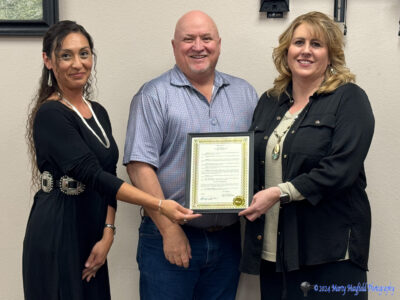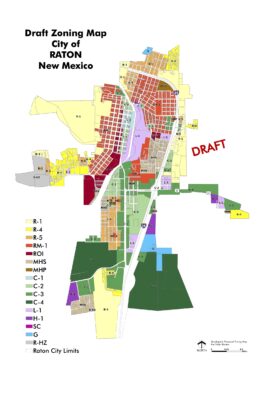By Marty Mayfield
KRTN Multi-Media
Charter Schools have been around for several years now and one maybe coming to Raton which has sparked conversation among Raton residents.
Comments have ranged from those in favor, because it offers a choice. While others feel it will hurt the already challenged public school system in Raton by pulling students and teachers from the public school system. Since the Raton schools are state funded, in part, on enrollment, further loss of students will impact the school’s funding. The area has also seen tough times in hiring and keeping qualified teachers as all the public schools in the area have posted notices that they are looking for teachers.
There is also confusion about how a charter school is funded and controlled. Some even ask what is a charter school and how does it come about? According to Wikipedia charter schools came in to existence in 1991 in Minnesota when they wrote the first charter school law. Since then 43 states have put charter school laws in the books with 2.9 million students being served by 6,700 public charter schools in the 2014-2015 school year.
The New Mexico Public Education Department puts out an annual report on the status of charter schools in New Mexico. According to the June 2015 report charter schools are public schools and like a district school do not charge tuition for students to attend. Charter schools in New Mexico are publicly funded with state money and are controlled by not only a board but also the PED.
The paragraphs below come from the NMPED June 2015 annual report on charter schools.
“What makes a charter school different is that they are authorized to open by presenting a charter proposal to one of the New Mexico charter school authorizers. If authorized, the school then operates under the charter that contains the school’s vision and mission for their school. Charter schools are publicly funded under the same funding formula as regular public schools, less a two percent administrative fee, and are subject to all of the same laws and regulations.
Charter schools offer a broad range of educational delivery models. For example, a school may choose to offer or focus on a model that provides Montessori-based learning, Expeditionary Learning, project-based learning, art-based learning, or STEM-based learning. In addition, some charter school models are based on partnerships within the community in which they are located or industries with which they have an affiliation. All charter schools are run by their own governing bodies.
Charter schools are schools of choice. Students and their families choose to attend charter schools that fit their educational needs. Admission is based on a first come, first served basis or by lottery, if more students apply than there are spots available. Many charter schools have waiting lists for students who want to attend, but who were not selected in the lottery.
There are presently 97 charter schools in New Mexico, serving over 15,000 students, or approximately five percent of New Mexico’s public school students. These schools are authorized by either the state authorizer (the Public Education Commission—the PEC) or a local authorizer (the local school board). The PEC authorizes the largest number of charters—59 percent, 20 percent are authorized by the Albuquerque Public School Board, and 22 percent are authorized by all other local school’s boards collectively New Mexico’s charter law provides a strong foundation of accountability and ranks 13 in the nation out of 43 states. In 2011, the legislature passed a law that requires charter schools and their authorizers to enter into legally binding contracts that clarify each party’s roles, responsibilities, and standards of performance.
A national comparison of New Mexico charter schools and laws to other states’ charters and laws is found at http://www.publiccharters.org/get the-facts/law-database.
At the same time that New Mexico’s Legislature wrote stronger accountability measures into the charter school law, the A– F grading system for public schools was implemented through the No Child Left Behind Waiver. The new charter school accountability program has utilized the A–F grading system to look at improved outcomes for charter school students. All data provided in the school performance comparisons in this report come from the publicly available A–F grading data.
The charter-school accountability law requires that charters and their authorizers enter into contracts when a new school is opened or once a school comes up for renewal. These contracts establish the working relationship between the school and its authorizer. The school is assessed annually under three negotiated performance frameworks—an academic framework that includes the school grade, an organizational framework that looks at school compliance with laws, and a financial framework that looks at information from the school audit.
Since the charter school accountability law applies to new and renewing schools, established charters in New Mexico will come under the law once they renew their charter. By the start of the school year 2014–2015, more than half of all charter schools have negotiated contracts with their authorizers. In four years, all of New Mexico’s charter schools will be monitored according to the new accountability law. (from the 2014 Charter School Annual Report June 2015)”
Are charter schools better than public schools? A final grade comparison in the annual report shows mixed results over a three-year period from 2012 to 2014 with charters schools in New Mexico doing better in one year and not as well in others. The PED however sees promise as schools continue to work to improve.
Final Grade Comparison. The final grade comparison compares state authorized; district authorized charter schools to all non-charter public schools:
| Final Grades—All students | 2012 | 2013 | 2014 | ||||||
| State Authorized Charter | District Authorized Charter | Non- charter Public Schools | State Authorized Charter | District Authorized Charter | Non- Charter Public Schools | State Authorized Charter | District Authorized Charter | Non- charter Public Schools | |
| AandB Scores Combined | 39% | 28% | 28% | 50% | 47% | 35% | 37% | 56% | 38% |
| C Scores | 23% | 28% | 34% | 26% | 37% | 27% | 26% | 15% | 23% |
| D and F Scores Combined | 38% | 44% | 38% | 24% | 16% | 38% | 33% | 29% | 39% |
The Q1 student comparison compares charter and non-charter schools in the growth of their lowest performing students (lowest 25% of students):
| Q1 students | 2012 | 2013 | 2014 | ||||||
| State Authorized Charter | District Authorized Charter | Non- charter Public Schools | State Authorized Charter | District Authorized Charter | Non- Charter Public Schools | State Authorized Charter | District Authorized Charter | Non- charter Public Schools | |
| Math Q1 | 25.77 | 22.93 | 24.03 | 30.49 | 24.22 | 26.99 | 25.77 | 22.93 | 24.03 |
| Reading Q1 | 28.81 | 26.1 | 26.05 | 43.37 | 27.72 | 26.99 | 28.81 | 26.1 | 26.05 |
The Q3 comparison compares charter schools with non-charter schools in the growth of their highest performing students (highest performing 75% of students):
| Q3 students | 2012 | 2013 | 2014 | ||||||
| State Authorized Charter | District Authorized Charter | Non- charter Public Schools | State Authorized Charter | District Authorized Charter | Non- Charter Public Schools | State Authorized Charter | District Authorized Charter | Non- charter Public Schools | |
| Math Q3 | 41.94 | 40.08 | 41.78 | 42.06 | 40.28 | 42.08 | 41.94 | 40.08 | 41.78 |
| Reading Q3 | 44.5 | 42.75 | 43.48 | 45.02 | 43.37 | 44.01 | 44.5 | 42.75 | 43.48 |
Based on the above percentages charter schools are doing only slightly better than public schools in many areas. With smaller student to teacher ratios in many charter schools and more focused study in some why aren’t the numbers for charter schools better? The PED states in their report that until all the schools get on the same grading and reporting formats it will be difficult to tell.
Many questions about a charter school in Raton will go unanswered until one is actually authorized and starts up. The Willow Springs Academy charter school is still in the application process and will be awaiting PED approval which is scheduled for September of 2016. According to Wayne Armacost one of those associated with the charter school movement they have three buildings in mind that they are looking at for the school. He noted that the PED has looked at the buildings and will make their decision so that the organization can approach the owners to work out an agreement. It takes a lot of money to equip a school with equipment to teach with, such as computers and white boards, desks and chairs plus all the other things it takes to make teaching students the process it should be. Not to mention the rent, utilities and salaries. Will a donor come forth to help out this cause? Armacost mentioned on KRTN’s This, That and the Other program they will seek private monies that may be available to charter schools.
According to Willow Springs Academy web page they will offer a blended learning environment which is described as “A blended learning classroom consists of a group of students, of similar age, working on individualized learning paths at their own pace. Students utilize a variety of tools that include; technology and hands on projects coupled with traditional learning.”
How will the charter school provide lunches for students? How will they provide bus transportation for students? Will they accept special needs students or special ed students? How will they deal with students that want to play sports, will they reach and agreement with the Raton Schools or will the students simply not compete in sports? Armacost noted on TT&O that the school would be focused solely on academics and not offer sports and that to help facilitate the learning environment will require students to wear uniforms. The above questions have yet to be answered by the group on either their web page or Facebook page.
The one question that is being asked is this, with all the effort being put into a charter school wouldn’t it be more productive for everyone if that effort was put into making the Raton Public Schools a better place to teach our students rather than trying to divide teachers, students and the community with a charter school? Bring that parent involvement, parent volunteerism to help teachers in the public schools. Raton public school’s teachers have often said they would love more parent involvement in teaching the students in the Raton school district.






I do not favor a charter school. I have been deeply involved in one, even serving on their board. What started with great promise later began to devolve into a school with a high number of problem students. One can say a charter school can expel problem students, but that affects funding, and after a while, funding is everything. Therefore, the problem students stay.
Another reason for my opposition is the serious damage to the traditional public school. The loss of funding has serious consequences. The smaller the district the more catastrophic the damage. A charter school can result in creating a lower performing traditional public school. The promise of better instructors, better methods, better outcomes, etc. over time, in my experience, are simply not realized.
Yet another reason is personal. One of our daughters went to the charter school for part of middle school. She entered high school deficient in math that was taught in the 8th grade. The promise is not always fulfilled. Somtimes in cannot be.
These are just three reasons I do not favor a charter school in Raton. Granted, these are from personal experience. One has to look at the results in the long haul. So, with kindness and positive thoughts, I offer my view. Of course, to dissatisfied parents, I offer what I often offer. Arrange to spend two weeks in the classroom. It will revolutionize your view.